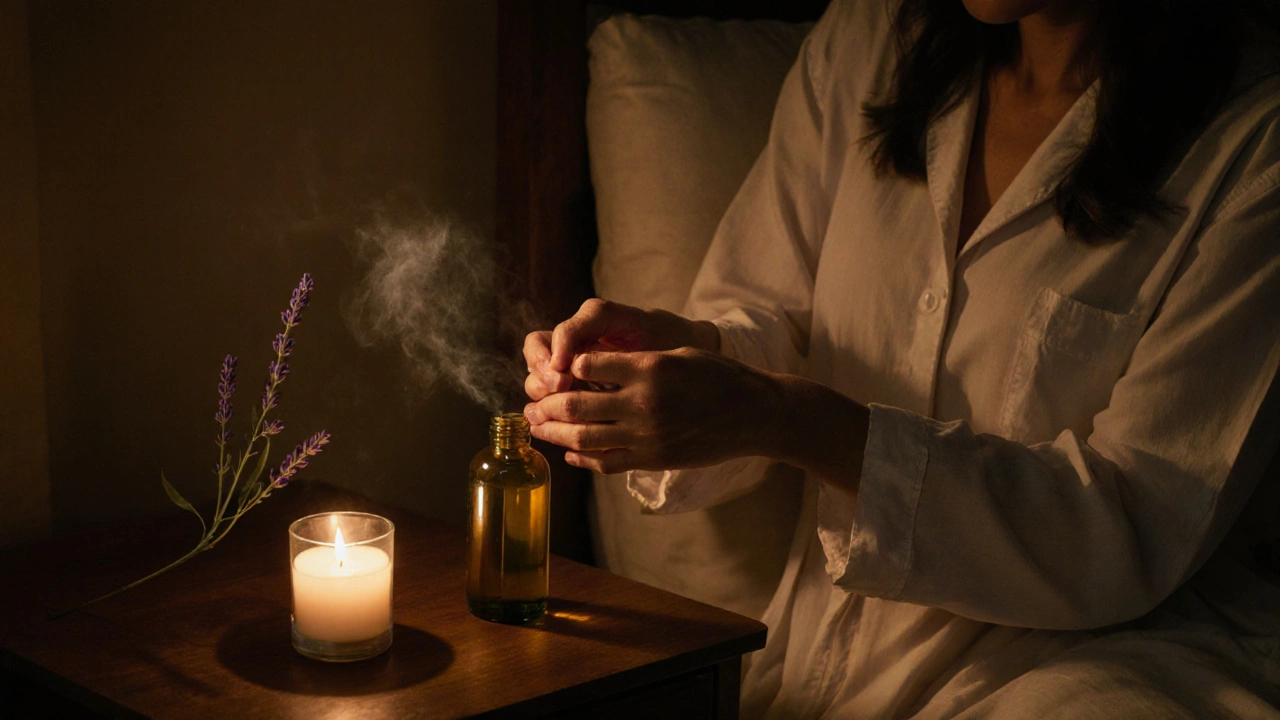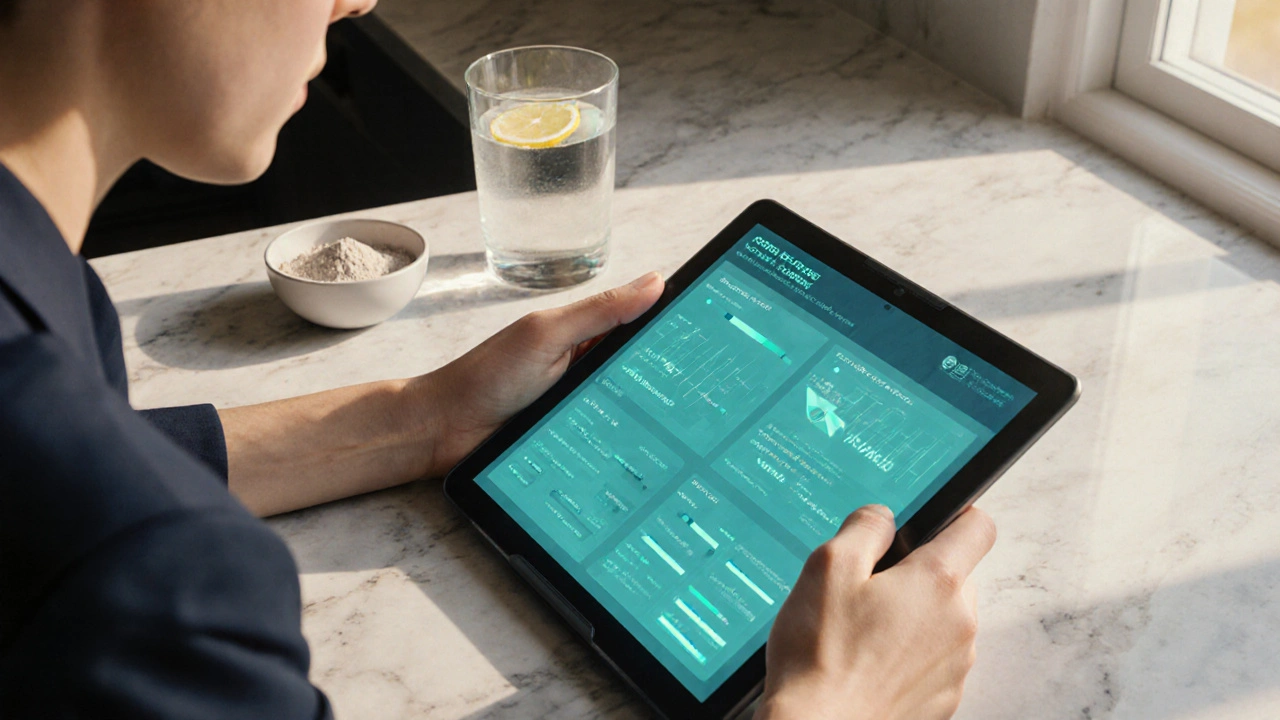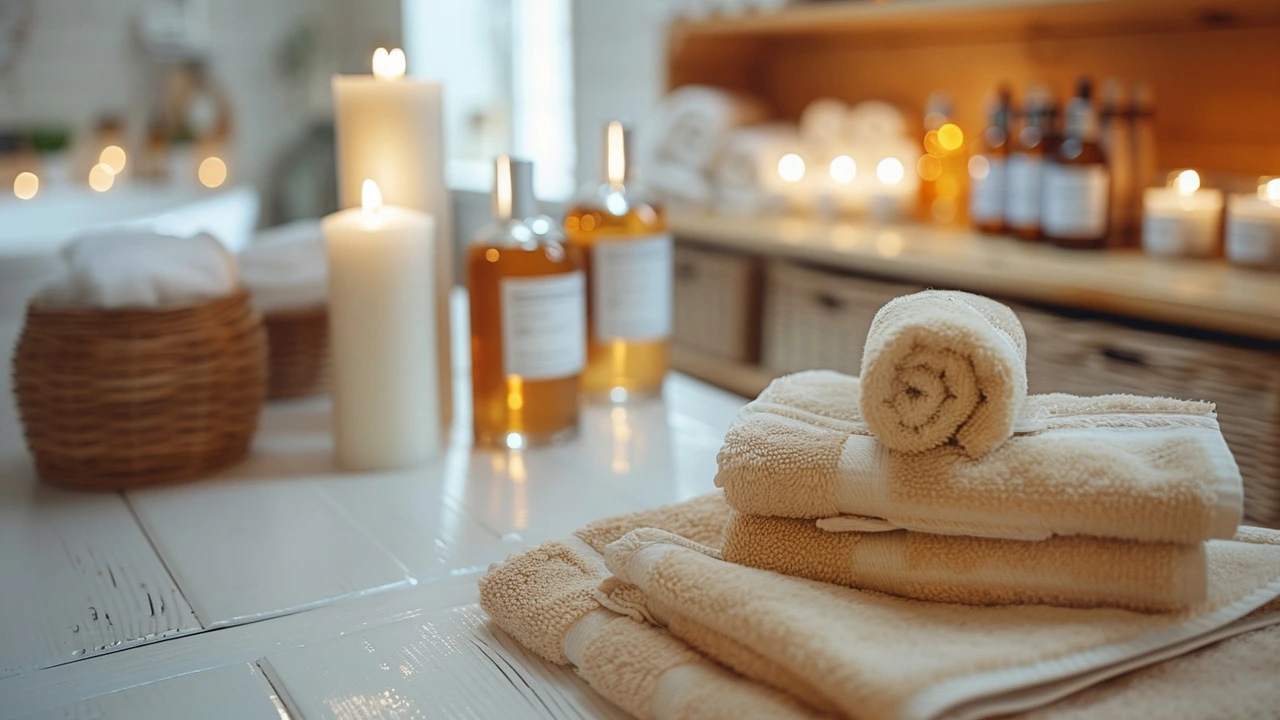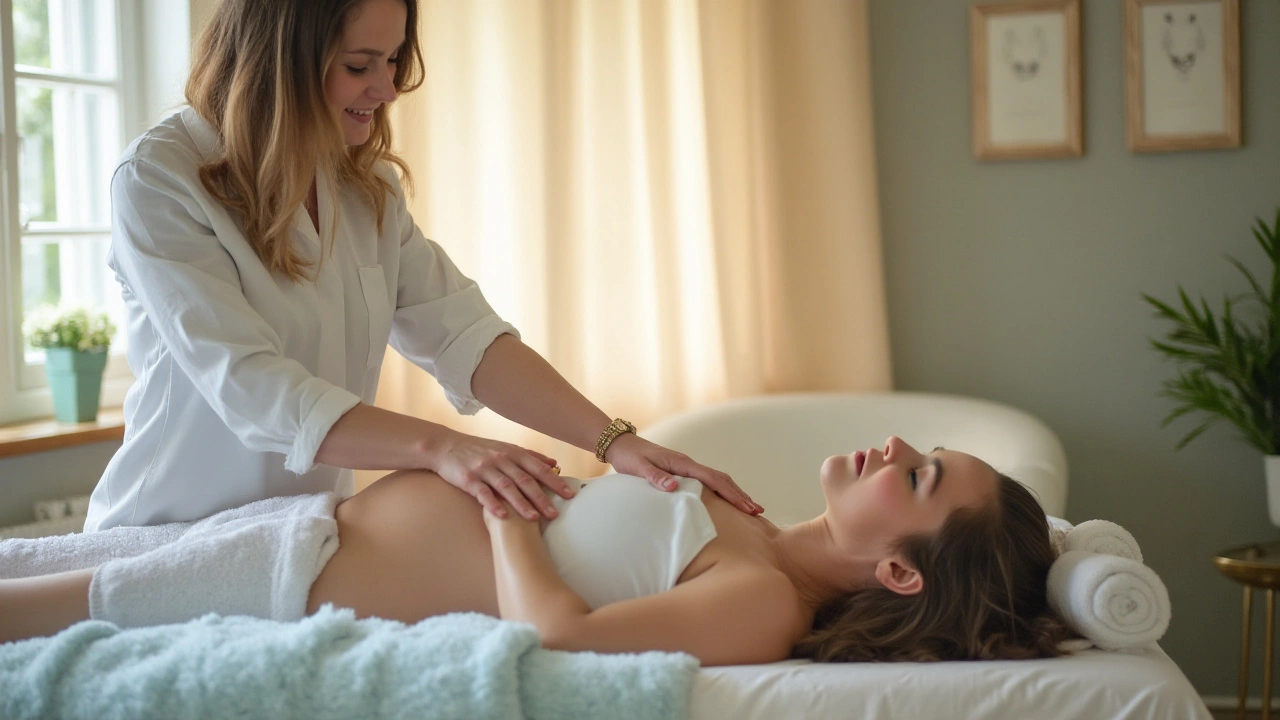The Science Behind Outcall Escort Massage: What Your Body and Brain Actually Do

You clicked because you want facts, not fantasy. What’s really happening in your body and brain during an outcall escort massage? Can touch at home lower stress hormones, change your pain signals, or help you sleep? Short answer: yes, with caveats. The longer answer is more interesting-and more useful if you care about consent, safety, and repeatable results. I’m writing from Perth, so I’ll also flag local considerations without spoiling the science.
TL;DR
- Touch activates skin sensors that shift your nervous system toward “rest and digest,” often lowering heart rate, blood pressure, and cortisol.
- Light-to-moderate pressure can raise oxytocin and endorphins and reduce pain via the spinal “gate” mechanism.
- Being in your own space can boost relaxation through context and control-but only if boundaries, consent, and expectations are crystal clear.
- Don’t expect miracles: effects are usually small-to-moderate and build with regular sessions and good aftercare.
- In Perth/WA, laws and licensing matter. Keep it legal, agree on scope, and prioritise safety for both client and provider.
The body-and-brain science: why touch in your space hits different
Start with the basics. Your skin is packed with mechanoreceptors-Merkel cells, Meissner and Pacinian corpuscles, Ruffini endings-that read pressure, stretch, and vibration. Slow, gentle stroking also stimulates C-tactile afferents, a class of nerve fibres tuned to social, soothing touch. Those signals travel up the spinal cord to the brain, including regions involved in emotion and body awareness (insula, anterior cingulate), not just the primary somatosensory cortex. That’s why a stroke can feel comforting beyond the mechanics.
Here’s what often shifts during and after a competent massage session:
- Autonomic Nervous System (ANS) shift: You go from sympathetic (fight/flight) toward parasympathetic (rest/digest). You’ll often see lower heart rate, a drop in blood pressure, and higher heart-rate variability (HRV), which is a proxy for vagal tone. Lab and clinical studies repeatedly show this pattern during massage.
- Stress hormones and neurotransmitters: Meta-analyses led by the Touch Research Institute (Miami) reported average cortisol reductions in the 20-30% range post-session in several cohorts, plus small-to-moderate increases in serotonin and dopamine. Effects vary by technique, pressure, and person.
- Oxytocin and bonding chemistry: Touch can raise oxytocin in some people. The rise is usually modest and context-dependent. It can feel calming and pro-social without turning the moment into a lifelong imprint.
- Pain modulation: Melzack and Wall’s Gate Control Theory says non-painful input can “close the gate” to painful input at the spinal level. Rhythmic pressure and skin stretch flood A-beta fibres, dampening pain signals. Add endorphins and reduced muscle guarding, and you have a reliable recipe for short-term pain relief.
- Fascia and muscle tone: Slow, sustained pressure on fascia likely influences mechanoreceptors (especially Ruffini endings), decreasing sympathetic drive and muscle tone. You don’t “break up” scar tissue with hands alone; you retrain the nervous system plus tissue glide over time.
- Circulation and lymph: Manual techniques can increase local blood flow and assist lymph movement, which many clients feel as warmth and de-puffing. It’s supportive, not magical detox.
- Sleep and mood: Many clients report better sleep the night after a session. ANS shift, oxytocin, and reduced rumination play a role.
While “escort massage” is a broad label in the wild, the physiology of touch doesn’t change. What can change is the context: in-home work, the interpersonal dynamic, and expectations. Those are not minor-placebo and nocebo live in context.
| Physiological marker | Typical direction of change | What influences it most | Evidence notes |
|---|---|---|---|
| Heart rate | Down during and shortly after session | Pressure rhythm, breathing, client anxiety baseline | Consistent in lab and field studies of massage |
| HRV (vagal tone) | Up during session | Slow tempo strokes, client comfort, temperature | Small-to-moderate effects reported |
| Cortisol | Down post-session | Session length, rapport, perceived safety | Meta-analyses show ~20-30% average drops |
| Oxytocin | Up in some clients | Trust, warmth, gentle pressure, duration | Variable across studies; modest rises |
| Perceived pain | Down short-term | Technique, pressure titration, expectation | Supported by RCTs for low back pain and anxiety |
“There’s some evidence that massage therapy may provide short-term relief from low-back pain.” - National Center for Complementary and Integrative Health (NCCIH)
That quote captures the tone of the field: real effects, often meaningful to the person, but not cure-alls.
Why the “outcall” context matters: control, cues, and the therapeutic alliance
Being at home changes your nervous system before anyone touches you. You control the temperature, the music, the lighting, even the scent. That sense of control is a powerful safety cue. Safety cues lower sympathetic arousal, which primes the ANS to respond better to soothing input. In plain English: if you’re less wound up when the first stroke lands, you’ll usually get more out of it.
Now add the therapeutic alliance-how safe, seen, and respected you feel with the provider. Research across hands-on therapies finds that the alliance is a big chunk of the outcome, often rivaling the specific technique. Psychotherapy research by Bruce Wampold and colleagues popularised “common factors,” and manual therapy research has echoed the same idea: attention, empathy, and expectations matter. When an outcall pro arrives respectful, clear, and punctual, your body reads that predictability as another safety cue.
There’s a flip side. Outcall work means a provider is stepping into your environment, which may not be ergonomically perfect or distraction-free. Last-minute chaos, roommates, pets, or alcohol can undo the safety cues you need. The same context that helps-control-can also hurt if it creates unpredictability.
To keep the context working for you, stack the deck with three anchors:
- Clear scope: Name what is and isn’t on the table before anyone travels. No fuzzy hopes, no guessing games.
- Predictable container: Start time, end time, breaks, payment method, and aftercare all set ahead.
- Environment: Warm room (24-26°C), dim light, two towels per person, water, and privacy. Phones on silent.
When those anchors are in place, the “common factors” line up with the physiology and you usually see stronger, more reliable outcomes.

Consent, ethics, and Perth/WA basics: keep it safe, keep it legal
This part matters. “Escort massage” is a broad, often misused term. Some providers are qualified massage therapists who offer relaxation or sensual touch within legal bounds; others are companions who may or may not include touch as part of their service. The law cares about the difference. So should your safety plan.
For readers in Perth/Western Australia in 2025:
- Sex work legislation in WA has been under review in recent years. Activities and advertising rules can change. Check current WA Government sources before you book.
- If you want therapeutic massage outcomes (pain/anxiety/sleep), prefer providers with recognised qualifications (e.g., Diploma of Remedial Massage HLT52021 in Australia) and appropriate insurance. Escorts are not automatically qualified therapists.
- Consent is a process, not a checkbox. Agree on scope, boundaries, attire, areas included/excluded, and any sexual or non-sexual expectations. If sexual services are not on the scope, do not push for them. If they are, verify legality and safety requirements in your area.
- Safety for both parties: share any relevant health conditions, avoid alcohol or sedatives before sessions, and have a clear exit plan if either person feels unsafe or unwell.
- Hygiene: clean linen, hand hygiene before/after, skin-friendly oil, and no massage over open wounds, rashes, or acute infections.
Ethically, your body’s stress response tracks how respected you feel. Pressure for more than was agreed, surprise add-ons, or boundary-testing can flip your nervous system back into fight/flight. That’s not just wrong-it also defeats the whole point of using touch to settle your system.
How to set up and get the most from a home session (step-by-step)
Think of this as a checklist to help the physiology do its best work. It covers both the practical setup and the mindset that supports good outcomes.
-
Define your goal in one sentence. “I want my upper back to feel looser and I want to sleep better tonight.” Goals direct the session and help you judge results.
-
Do a pre-check. Rate pain/tension from 0-10, note where it lives, and take 60 seconds to notice your breath and heart rate. If you track HRV on a smartwatch, jot the baseline. Quick metrics make outcomes clear.
-
Confirm scope and boundaries before travel. Areas included/excluded, pressure preferences, draping, talk/no-talk, music volume, time window, fee, payment method, and cancellation terms. No ambiguity.
-
Prepare the room. Aim for 24-26°C. Dim light or warm lamp. Two towels and a spare sheet. A chair for belongings. Water within reach. Pets in another room. Phone on silent. Shower if you like-it helps you arrive in your body.
-
Choose your oil/cream wisely. Neutral, unscented if you’re sensitive. Jojoba is skin-like and less staining. Coconut glides well but can be comedogenic. Patch-test if you have allergies.
-
Arrival and reconnection. Two-minute check-in: remind each other of the plan, pressure scale (1-10), and a safe word or phrase for “reduce pressure/stop.” This short talk sets the nervous system at ease.
-
During the session: regulate together. Breathe slower than usual. Long exhale (4-6 seconds) nudges vagal tone. If your mind races, gently name sensations (“warmth in shoulder,” “stretch along spine”). This builds interoception and dampens rumination.
-
Pressure titration. The sweet spot is “hurts so good,” not grit-your-teeth pain. Above a 7/10 often triggers guarding and blunts the outcome. Communicate early.
-
Close the session cleanly. Slow the tempo for the last 3-5 minutes. Short debrief: what changed, what didn’t, any aftercare notes. Pay without drama; your nervous system notices money stress too.
-
Aftercare. Sip water. Gentle movement (cat-cow, shoulder rolls). Keep your next 30-60 minutes quiet if possible. Journal two lines about how you feel at 2 hours and at bedtime. The brain consolidates calm when you notice it.
Want to make effects stick? Stack sessions with daily micro-doses of touch and movement: self-massage with a ball, a warm shower plus skin brushing, breathwork (4-7-8 or box breathing), and 10 minutes of outdoor light early in the day for a circadian nudge.

Evidence, limits, myths, and your action checklists
Massage has solid, if not blockbuster, evidence for short-term pain and anxiety relief. Oxytocin and HRV shifts are real for many, but not guaranteed. The biggest effect sizes happen when the technique, the relationship, and the context line up. Here are some quick truths and traps:
- Myth: “Deep tissue fixes everything.” Too-deep pressure can spike your stress response. The goal is nervous system regulation, not a pain contest.
- Myth: “You’re flushing toxins.” Your liver and kidneys handle detox. Massage moves fluid and eases tone; that’s enough.
- Myth: “Oxytocin means I’ll imprint.” Oxytocin rises are usually modest and state-based. Respect is more important than chemistry.
- Reality: Place matters. At home, you control cues, which often improves outcomes-if you protect privacy and predictability.
- Reality: Clear consent isn’t optional. It’s the thing that lets your body drop its guard.
Quick decision checklist before you book
- Can I state my goal in one sentence?
- Do I know the provider’s qualifications, scope, and boundaries?
- Is the session legal under current WA rules as described?
- Is my space warm, private, and distraction-free?
- Do we have a simple signals system for pressure and stop?
Outcome tracking mini-cheat sheet
- Before: pain/tension (0-10), heart rate, mood word.
- After (10 min): same three measures.
- Later (2 hours, bedtime): sleepiness, pain/tension, mood word.
- Weekly: note patterns. If nothing shifts after 3 sessions, reframe goals or change providers.
Provider red flags
- Won’t discuss scope or boundaries in writing.
- Pushes services you didn’t request or agree to.
- Uses jargon to dodge simple questions about training or safety.
- Dismisses your pain or consent signals.
- Shows up impaired or asks you to drink “to relax.”
Credible sources underpinning claims here include the Touch Research Institute’s syntheses on cortisol and neurotransmitters, HRV research in manual therapies, NCCIH summaries on pain and anxiety, and foundational pain science by Melzack and Wall. If you like deep dives, search those names and terms; you’ll find primary literature.
One last point on language. Labels like outcall escort massage mix different worlds: therapeutic touch, sensual touch, and companionship. The science of touch travels across those worlds, but the ethics and legality do not. Keep your agreements specific, your boundaries clean, and your expectations realistic.
Mini‑FAQ
- Will I definitely get an oxytocin boost? Not guaranteed. Some do, some don’t. The safer and more comfortable you feel, the more likely it is.
- How long do benefits last? Often hours to a day or two. Regular sessions plus daily self-care make effects more durable.
- Is nudity required? No. Draping and attire should fit the agreed scope and your comfort. Consent governs clothing like it governs touch.
- Can massage replace therapy for trauma? No. Touch may support regulation, but trauma care belongs with qualified mental health pros. If touch triggers you, pause and consult a clinician.
- Does soreness mean it worked? Not necessarily. Mild soreness can happen from unfamiliar pressure. Sharp or lingering pain suggests pressure was too deep.
- What oil is best for sensitive skin? Jojoba or unscented fractionated coconut are common low-irritant options. Patch-test first.
- How long should a session be? 60-90 minutes is typical. Longer isn’t always better; quality and pacing matter more.
- How often? For stress and muscle tone, weekly or fortnightly helps. For maintenance, monthly can work.
Next steps and troubleshooting
- If you’re a first‑timer: Start with a relaxation‑focused session. Keep goals simple. Debrief after: what pressure, tempo, and areas felt best?
- If you have chronic pain: Pair sessions with gentle mobility (walking, easy stretches). Track pain and function, not just pain alone. Consider seeing a qualified remedial therapist.
- If anxiety spikes before sessions: Do 5 minutes of slow breathing (inhale 4, exhale 6) and a warm shower. Ask for slower pacing and longer holds at the start.
- If you feel nothing changed: Revisit the context. Was the room cold? Were you distracted? Was pressure too deep or too light? Try adjusting one variable at a time.
- If boundaries felt fuzzy: Stop booking until you get clear, written agreements. Your nervous system won’t relax without that foundation.
If you want the short recipe for real results: safe context, clear consent, pressure you can breathe through, and a calm wind‑down. Do that, and your biology usually meets you halfway-from stress chemistry to pain signals to sleep.
- Alfred, Perth





